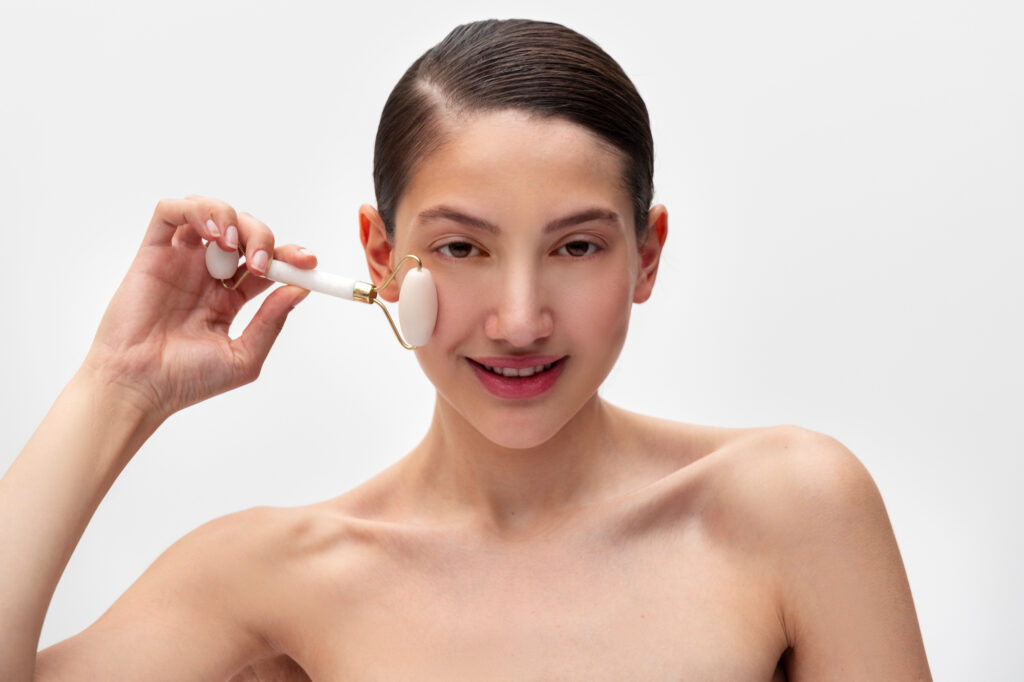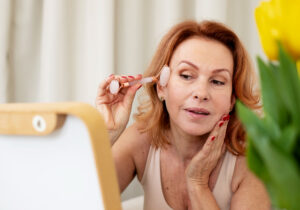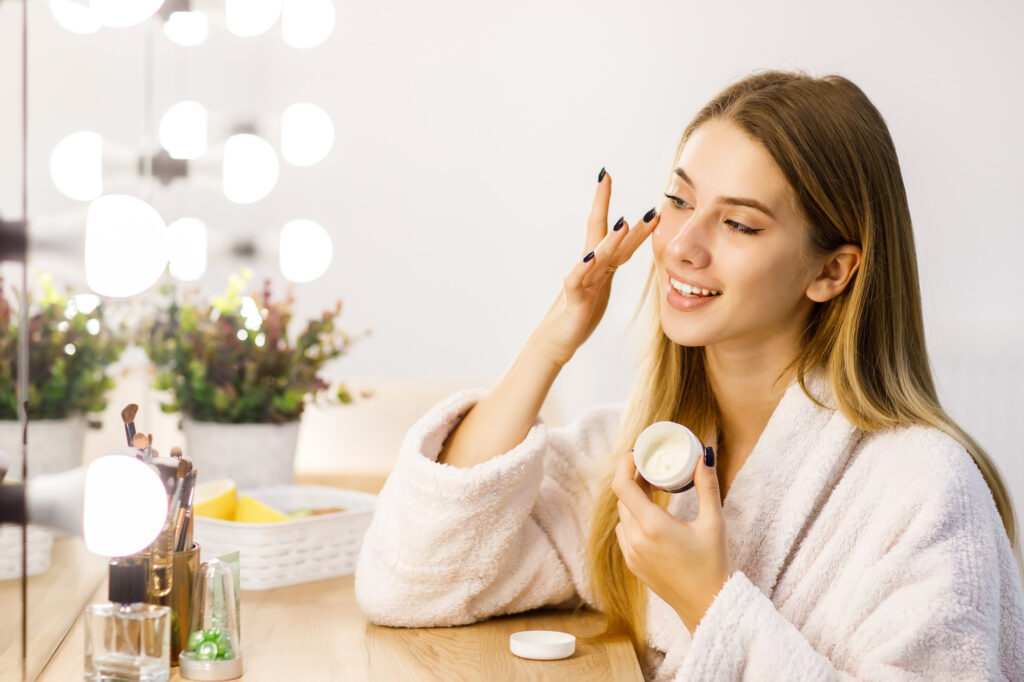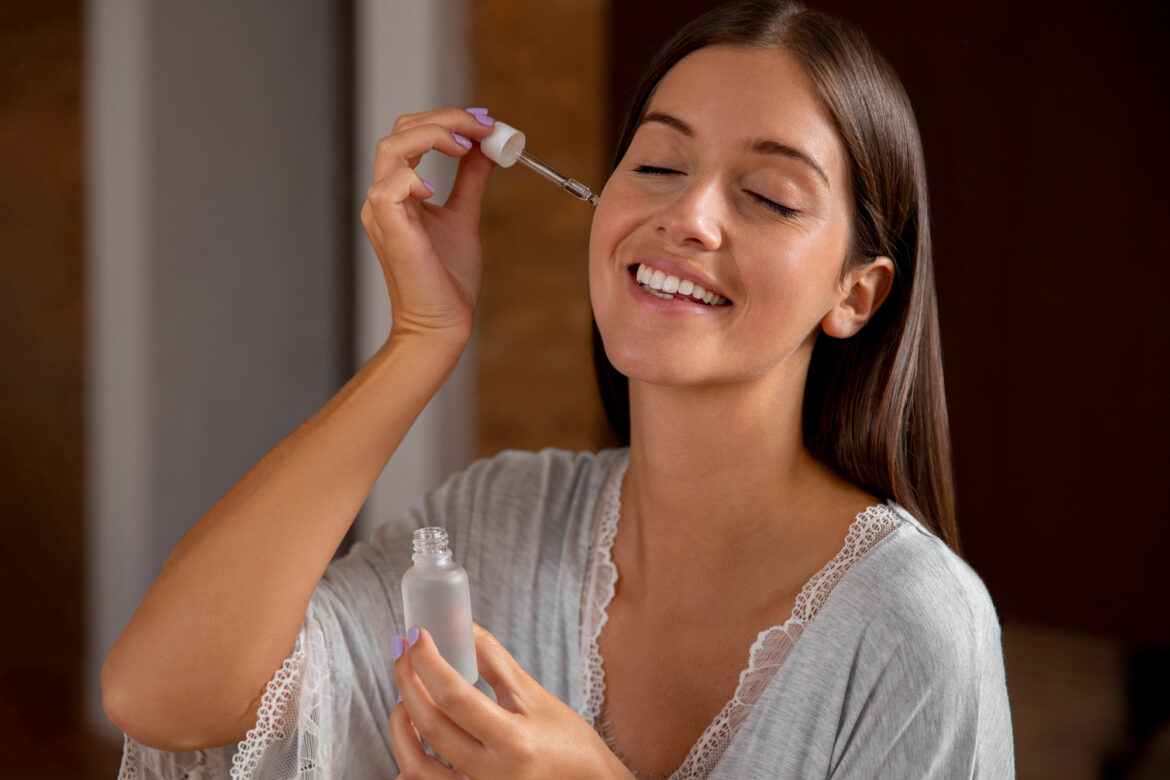Retinol is one of the most talked-about ingredients in the world of skincare. It’s often praised for its ability to improve skin texture, reduce the appearance of wrinkles, and treat acne. But with all the information out there, it can be confusing to know when and how to use retinol. Whether you’re new to skincare or already have a routine, understanding the best age to start using retinol, the ideal time to apply it, and how it fits into your skincare order can make a big difference in the results you see.
In this article, we’ll break down everything you need to know about using retinol in simple, easy-to-understand language. We’ll also provide helpful links to enhance your understanding and guide you through the process.
Table of Contents
ToggleWhat Is Retinol?
Retinol is a form of Vitamin A that is used in many skincare products. It’s known for its powerful anti-aging and acne-fighting properties. When applied to the skin, retinol speeds up cell turnover, meaning it helps your skin shed old, dead cells and produce new, healthy ones more quickly. This process can reduce the appearance of fine lines, wrinkles, and dark spots, and it can also help clear up acne.

Related Link: What Is Retinol? A Beginner’s Guide
Why Is Retinol Important for Skincare?
Retinol is considered a gold standard in skincare for several reasons. Here’s why it’s so important:
- Anti-Aging: Retinol is known for its ability to reduce the appearance of fine lines and wrinkles. It stimulates collagen production, which helps keep the skin firm and youthful.
- Acne Treatment: Retinol can help unclog pores, reduce acne breakouts, and prevent future ones. It’s particularly effective for people with mild to moderate acne.
- Improving Skin Texture: Regular use of retinol can smooth out rough skin and reduce the appearance of large pores.
- Fading Dark Spots: Retinol can help fade hyperpigmentation, such as age spots and sunspots, leading to a more even skin tone.
For more detailed information on the benefits of retinol, you can visit Healthline’s guide to retinol.
When to Start Using Retinol: Best Age to Start Using Retinol
There isn’t a specific age when everyone should start using retinol, as it depends on your skin type, concerns, and overall skincare goals. However, many dermatologists recommend starting retinol in your mid-to-late 20s. This is the time when your skin’s natural collagen production begins to slow down, and the first signs of aging, such as fine lines and uneven texture, might start to appear.
-
In Your 20s
Many dermatologists recommend starting retinol in your mid to late 20s. This is because the skin’s natural cell turnover rate starts to slow down as early as your mid-20s. By introducing retinol at this age, you can help maintain your skin’s youthful appearance and prevent the early signs of aging.
- Benefits: Starting in your 20s can help prevent fine lines and wrinkles from forming. It’s also a good age to address issues like acne and uneven skin tone.
- What to Use: A gentle, low-strength retinol product is usually sufficient at this age. You don’t need to use it every night—two to three times a week is a good starting point.
-
In Your 30s
If you haven’t started using retinol in your 20s, your 30s are an excellent time to begin. This is when the first signs of aging, such as fine lines and dullness, often start to appear.
- Benefits: Retinol can help reduce the appearance of fine lines, boost collagen production, and improve skin texture.
- What to Use: You may want to use a slightly stronger retinol product in your 30s, but it’s still important to start slowly to avoid irritation. Consider using it every other night and gradually increase frequency as your skin adjusts.
-
In Your 40s and Beyond
In your 40s and beyond, retinol can play a crucial role in your skincare routine. This is when more pronounced signs of aging, such as deeper wrinkles and age spots, become more noticeable.

- Benefits: Retinol can help reduce the depth of wrinkles, improve skin firmness, and even out skin tone.
- What to Use: Depending on your skin’s tolerance, you might opt for a higher-strength retinol product. If you’re experiencing significant signs of aging, consider consulting a dermatologist for prescription-strength retinoids.
Related Link: When Should You Start Using Retinol?
How to Use Retinol: A Step-by-Step Guide
Using retinol can seem daunting at first, but with the right approach, it can become a valuable part of your skincare routine. Here’s a simple step-by-step guide to help you get started.
1. Start Slowly
Retinol can be strong, especially if you’re new to it. To avoid irritation, start by using retinol once or twice a week, and gradually increase the frequency as your skin builds tolerance. If you have sensitive skin, you may need to start with an even lower frequency or use a lower concentration of retinol.
Tip: Begin with a pea-sized amount and apply it to your entire face, avoiding the eye area and lips.
Also Read: Should I Wash My Face With Cold Water or Hot Water? The Great Face Wash Debate
2. Apply Retinol at Night
Retinol should be applied at night because it can make your skin more sensitive to the sun. Applying it in the evening allows the retinol to work without the risk of sun exposure, which can cause irritation or reduce its effectiveness.
Related Link: Why You Should Apply Retinol at Night
3. Follow Up with Moisturizer
Retinol can be drying, so it’s important to follow up with a good moisturizer. This helps to hydrate your skin and reduce the risk of irritation. Look for a moisturizer that is gentle and free from irritating ingredients like fragrance or alcohol.

Tip: If you have dry or sensitive skin, you can apply your moisturizer before the retinol to create a buffer that minimizes irritation.
4. Use Sunscreen Daily
Because retinol can make your skin more sensitive to the sun, it’s essential to apply sunscreen every morning. Choose a broad-spectrum sunscreen with at least SPF 30 to protect your skin from UV rays. Sunscreen helps prevent sunburn and further skin damage, which is especially important when using retinol.
Related Link: Best Sunscreens to Use with Retinol
5. Be Patient and Consistent
Retinol is effective, but it takes time to see results. You may notice some improvements after a few weeks, but it can take several months to see the full benefits. Consistency is key—keep using retinol regularly to achieve the best results.
Tip: Don’t be discouraged if you experience mild irritation or flakiness at first. This is common and usually subsides as your skin adjusts to the retinol.
Related Link: How Long Does It Take for Retinol to Work?
Where Does Retinol Fit in Your Skincare Routine?
Retinol should be applied in a specific order within your skincare routine to maximize its effectiveness and minimize irritation. Here’s how to incorporate it:
1. Cleanser
Start with a gentle cleanser to remove dirt, oil, and makeup. Clean skin allows retinol to penetrate more effectively.
2. Toner (Optional)
If you use a toner, apply it after cleansing. Make sure it’s alcohol-free and hydrating, as harsh toners can increase irritation when using retinol.
3. Retinol
Apply retinol after cleansing (and toning, if you use a toner). Remember, a pea-sized amount is usually sufficient.
4. Moisturizer
After applying retinol, follow up with a moisturizer to lock in hydration and protect your skin’s barrier.
5. Eye Cream (Optional)
If you use an eye cream, apply it after your moisturizer. Make sure to avoid applying retinol directly around the eyes, as this area is particularly sensitive.
6. Sunscreen (Morning Routine)
If you’re using retinol at night, apply sunscreen the next morning as the final step in your morning skincare routine.
Related Link: The Correct Order to Apply Skincare Products
What to Expect When You Start Using Retinol
When you first start using retinol, your skin may go through an adjustment period. This is completely normal, but knowing what to expect can help you manage any side effects.
1. Initial Irritation
It’s common to experience some redness, dryness, or peeling when you first start using retinol. This is often called “retinol purging” and usually occurs because the retinol is increasing cell turnover. As your skin sheds dead cells more quickly, it may become temporarily irritated.
Tip: If the irritation is severe, try using retinol less frequently or applying it over your moisturizer to create a barrier.
2. Increased Sensitivity
Retinol can make your skin more sensitive to the sun, so it’s essential to be diligent with sunscreen. You may also notice that your skin feels more sensitive to other products in your routine, especially those with active ingredients like exfoliants or acids.

3. Gradual Improvements
With consistent use, you should start to see improvements in your skin’s texture, tone, and overall appearance. Fine lines and wrinkles may become less noticeable, and your skin may look brighter and smoother.
4. Long-Term Benefits
Over time, retinol can help boost collagen production, reduce hyperpigmentation, and even out skin tone. Many people find that their skin looks more youthful and radiant after several months of regular retinol use.
Related Link: What to Expect When You Start Using Retinol
Common Mistakes to Avoid When Using Retinol
Using retinol incorrectly can lead to irritation and less effective results. Here are some common mistakes to avoid:
1. Using Too Much Too Soon
One of the biggest mistakes people make with retinol is using it too frequently or applying too much. Start with a small amount and gradually increase usage as your skin adjusts.
2. Skipping Sunscreen
Since retinol makes your skin more sensitive to the sun, skipping sunscreen is a big no-no. Always wear sunscreen during the day to protect your skin from UV damage.
Also Read: Sunshine Savvy: Do I Really Need Sunscreen Every Day?
3. Combining with Harsh Products
Avoid using retinol with other strong active ingredients like AHAs, BHAs, or benzoyl peroxide, especially if you’re new to retinol. These combinations can increase irritation and dryness.
4. Applying Retinol During the Day
Retinol should be applied at night to avoid sun sensitivity and degradation of the product. Daytime application can lead to irritation and reduce the effectiveness of the retinol.
5. Not Moisturizing Enough
Retinol can be drying, so it’s crucial to follow up with a good moisturizer. Neglecting this step can lead to increased irritation and dryness.
Related Link: Top Mistakes to Avoid When Using Retinol
Choosing the Right Retinol for Your Skin Type
Not all retinols are created equal, and finding the right one for your skin type can make a big difference in your experience and results.
1. For Sensitive Skin
If you have sensitive skin, look for a gentle retinol or retinoid derivative like retinyl palmitate. These forms are less potent and less likely to cause irritation. You can also find products formulated specifically for sensitive skin, often with added soothing ingredients like niacinamide or hyaluronic acid.
Recommended Product: Gentle Retinol Cream for Sensitive Skin
2. For Oily or Acne-Prone Skin
Retinol can be particularly beneficial for oily and acne-prone skin. It helps to unclog pores, reduce oil production, and prevent future breakouts. If you have oily or acne-prone skin, look for a retinol product that is lightweight, non-comedogenic (won’t clog pores), and possibly combined with other acne-fighting ingredients like salicylic acid.
Recommended Product: Retinol Serum for Oily and Acne-Prone Skin
3. For Dry Skin
For those with dry skin, retinol can sometimes exacerbate dryness and flakiness. To counteract this, choose a retinol product that is enriched with hydrating ingredients like hyaluronic acid, glycerin, or ceramides. You might also consider using a cream-based retinol, which tends to be more moisturizing than gels or serums.
Recommended Product: Hydrating Retinol Cream for Dry Skin
4. For Mature Skin
Mature skin can benefit greatly from retinol’s anti-aging properties. Look for a higher concentration of retinol or a prescription-strength retinoid if your skin can tolerate it. Products that also contain peptides, antioxidants, or collagen-boosting ingredients can further enhance the anti-aging effects.
Recommended Product: Advanced Retinol Treatment for Mature Skin
5. For Combination Skin
Combination skin requires a balanced approach. A lightweight retinol serum might work best, allowing you to layer other products on top depending on your skin’s needs in different areas. You can also spot-treat with retinol in the oilier parts of your face, such as the T-zone.
Recommended Product: Balanced Retinol Serum for Combination Skin
Related Link: How to Choose the Right Retinol for Your Skin Type
Final Thoughts
Retinol is a powerful ingredient that can significantly improve the appearance of your skin when used correctly. Whether you’re looking to prevent the first signs of aging, treat acne, or enhance your skin’s texture, retinol can be a valuable addition to your skincare routine. By starting slowly, using it in the right order, and being consistent, you can achieve smooth, youthful-looking skin.
Remember, everyone’s skin is different, so it may take some time to find the right product and routine for you. If you’re ever unsure about how to use retinol or which product to choose, don’t hesitate to consult with a dermatologist.
FAQs: When and How to Use Retinol – Best Age, Time, Skin Care Order
1. What is the best age to start using retinol?
Answer: The best age to start using retinol generally depends on your skin type, concerns, and goals. Most dermatologists recommend introducing retinol in your mid-to-late 20s when your skin’s natural collagen production begins to decline. At this stage, retinol can help prevent early signs of aging, such as fine lines and uneven skin texture. For those with specific concerns like acne or hyperpigmentation, retinol may be introduced earlier under the guidance of a dermatologist. If you start in your 30s or 40s, retinol can help to reduce the appearance of existing wrinkles and improve overall skin tone and texture.
2. How often should I use retinol when starting out?
Answer: When starting retinol, it’s crucial to begin slowly to allow your skin to build tolerance. Start by applying retinol once or twice a week at night. As your skin adapts, you can gradually increase the frequency to every other night, and eventually, if your skin tolerates it well, nightly use. This gradual introduction helps to minimize potential side effects like irritation, redness, and peeling. It’s also important to pay attention to your skin’s reaction and adjust the frequency if you notice any signs of overuse.
3. What time of day is best for applying retinol?
Answer: Retinol is best applied at night. The primary reason for this is that retinol can make your skin more sensitive to sunlight, which can lead to irritation and reduce the effectiveness of the product. Additionally, retinol can degrade when exposed to sunlight, further diminishing its benefits. By applying retinol in the evening, you give it ample time to work while your skin repairs and regenerates overnight. Always remember to apply sunscreen the next morning, as retinol can increase your skin’s sensitivity to UV rays.
4. In what order should retinol be applied in my skincare routine?
Answer: The correct order to apply retinol in your skincare routine is as follows:
- Cleanser: Start with a gentle cleanser to remove dirt, oil, and makeup.
- Toner (Optional): If you use a toner, apply it after cleansing. Ensure it’s gentle and alcohol-free to avoid increasing irritation.
- Retinol: Apply retinol directly after cleansing (and toning, if applicable). Use a pea-sized amount and avoid sensitive areas like the eyes and lips.
- Moisturizer: Follow up with a hydrating moisturizer to lock in moisture and create a protective barrier, which can help reduce irritation.
- Sunscreen (Morning Routine): The next morning, apply a broad-spectrum sunscreen with at least SPF 30 to protect your skin from UV damage.
5. What should I do if my skin becomes irritated after using retinol?
Answer: If you experience irritation after using retinol, such as redness, peeling, or dryness, it’s important to take steps to soothe and protect your skin. First, reduce the frequency of retinol application—consider using it once or twice a week until your skin adjusts. Ensure you’re applying a moisturizer immediately after retinol to hydrate and support your skin barrier. If the irritation persists, you can try applying retinol over your moisturizer, which can act as a buffer and reduce irritation. Avoid using other potentially irritating products, such as exfoliants or acids, during this time. If the irritation is severe, it’s best to discontinue use and consult a dermatologist for advice.
6. Can retinol be used with other skincare products?
Answer: Retinol can be combined with other skincare products, but it’s important to be mindful of the combinations to avoid irritation. For example, avoid using retinol alongside strong exfoliants (like AHAs and BHAs) or other potent actives (such as Vitamin C or benzoyl peroxide) in the same routine, as this can lead to increased sensitivity and dryness. Instead, alternate these products on different nights or use them in your morning routine if applicable. Retinol works well with hydrating and soothing ingredients like hyaluronic acid, niacinamide, and ceramides, which can help to mitigate any dryness or irritation caused by retinol.
7. How long does it take to see results from using retinol?
Answer: The time it takes to see results from retinol can vary depending on your skin type, concerns, and the strength of the product. Typically, some initial improvements in skin texture and tone can be noticed within 4 to 6 weeks of consistent use. However, for more significant changes, such as a reduction in fine lines, wrinkles, and hyperpigmentation, it may take 3 to 6 months of regular use. It’s important to be patient and consistent with retinol, as its benefits accumulate over time. Additionally, combining retinol with a well-rounded skincare routine, including sunscreen and moisturizers, can help maximize results.
8. Can I use retinol during pregnancy or breastfeeding?
Answer: It’s generally recommended to avoid using retinol during pregnancy and breastfeeding. Retinoids, including retinol, are derived from Vitamin A, which in high doses can be harmful during pregnancy. While topical retinol products typically contain lower concentrations, it’s still advised to err on the side of caution. There are alternative skincare ingredients, such as bakuchiol, which offer similar anti-aging and acne-fighting benefits without the associated risks. If you’re pregnant or breastfeeding and concerned about your skincare routine, it’s best to consult with your healthcare provider or a dermatologist for safe alternatives.
9. What concentration of retinol should I start with?
Answer: If you’re new to retinol, it’s advisable to start with a lower concentration, such as 0.25% or 0.3%. This allows your skin to gradually acclimate to the ingredient, reducing the likelihood of irritation. After several months of consistent use, if your skin tolerates the lower concentration well, you can consider moving up to a higher concentration, like 0.5% or 1%. It’s important to note that stronger concentrations aren’t always better; what matters most is finding a strength that your skin can tolerate without excessive irritation. Always monitor your skin’s response and adjust accordingly.
10. Can retinol help with acne and acne scars?
Answer: Yes, retinol is highly effective in treating acne and improving the appearance of acne scars. Retinol works by increasing cell turnover, which helps to prevent clogged pores—a common cause of acne. Additionally, it can reduce the inflammation associated with acne, leading to fewer breakouts. Over time, retinol can also help fade post-inflammatory hyperpigmentation (dark spots) and smooth out the texture of acne scars by promoting collagen production. For severe acne or deep scars, retinol may be used in conjunction with other treatments, such as chemical peels, microneedling, or laser therapy, for more comprehensive results.
